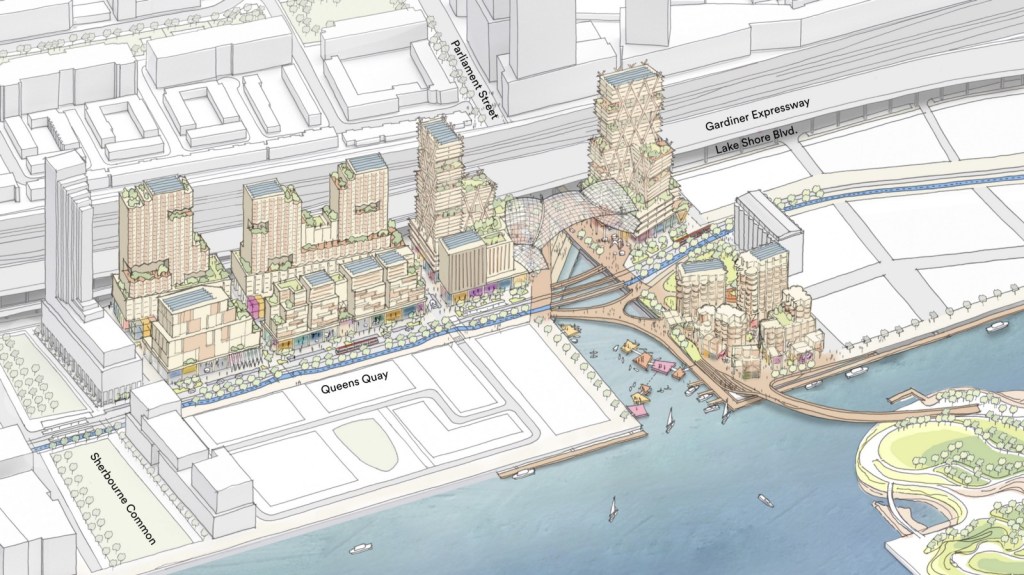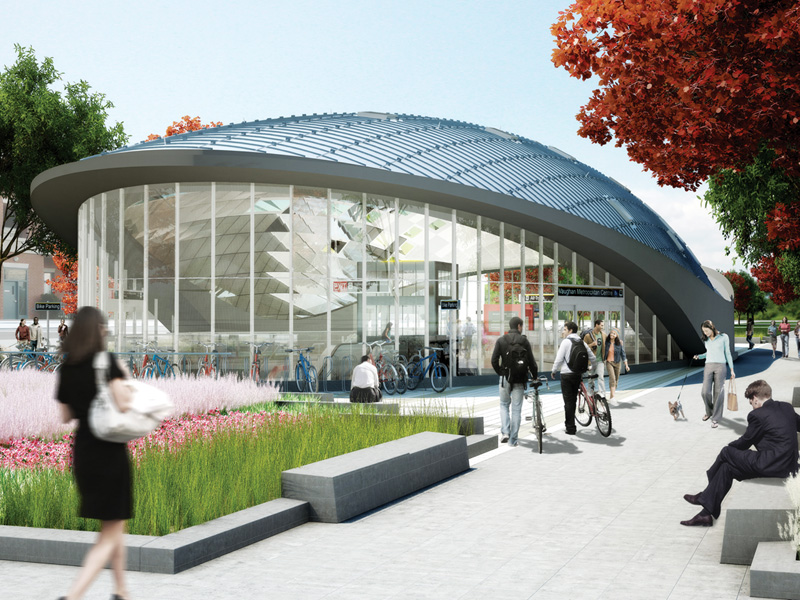Toronto recently hosted its very first Yardi Executive Briefing exclusively for multifamily clients. Participants explored the latest innovations in RentCafe and smart home technology. Below, we’ve highlighted the latest and greatest multifamily technology that you’ve got to have. Re-imaging Real Estate through Innovation Seven technologies are changing the future of multifamily housing: Untethered Connectivity: Voice-activated digital assistants handle everything from rent payments, maintenance requests, and adjusting the thermostat in a unit. Renters love the convenience, which adds to a unit’s perceived value. Smart Home Accessibility: Artificial intelligence and wireless connection unite to make smart home technology accessible to renters on the go. Via machine learning, apps within a smart car can determine when users are heading home. They can adjust the thermostat and fulfill other user preferences. Broadband Rules: Broadband connectivity is replacing cable as users complain of high cable prices and obnoxious bundled services. Begin negotiation with local broadband providers to offer services to your renters. Virtual Fitness: Don’t scrap your rarely used fitness center. Instead, give it a makeover by adding virtual fitness services. Renters value the option to have a virtual coach help them through workouts. Sleek + Chic: Renters appreciate smart home technology but don’t want bulky hardware interrupting their interior design. Technology needs to work on demand while blending functionality with interior design. Welcome the Robots: Drones for package delivery are a hot trend in metropolitan areas. If you haven’t already, plan and implement a concierge service to handle package deliveries. While you’re at it, designated parking spots and charging stations for autonomous vehicles may soon be a necessity. Modular Building is Cool Again: Unlike the first wave of prefab buildings in the 1930s, today’s modular homes are durable and highly customizable. Units can easily convert based on current...
Chic. Cozy. Smart.
Toronto’s New Smart Neighbourhood
Sidewalk Labs, the urban innovation organization of Alphabet, Google’s parent company, has plans for a new neighbourhood in Toronto. The 800-acre site, Quayside, will be the first of its kind. The Neighbourhood Hip innovation and practicality combine on the streets of Quayside. “Torontonians want more affordable housing, faster ways to get around the city, safer streets for pedestrians and cyclists, [and] a cleaner and healthier environment,” said Jesse Shapins, Sidewalk Labs’s director of public realm. “That’s what we are aiming to do by creating this new neighbourhood.” To fulfill this vision, the site will be composed of mixed-use developments and 12 mass timber buildings up to 30 stories tall. “If the primary load-bearing structure is made of either solid or engineered wood, it’s a mass-timber building,” says Tsay Jacobs director of the Building Technology Lab at Perkins+Will and a member of the International Code Council’s Ad Hoc Committee on Tall Wood Buildings. The recently reimagined building method is a risk, but it bears great promise. Mass Timber + Modular Construction Due to innovations in building technologies, the unique construction style is strong enough to support tall structures with timber frames. It is also non-combustible, a necessity for many existing building codes. Canadian builders lead the industry in mass timber construction. The new Toronto neighbourhood has several experts on hand. In addition to durability and safety, mass timber construction can also be more sustainable. Sidewalk Labs estimates that construction carbon emissions will be 75 to 85 percent less than conventional construction. How? A combination of mass timber construction with modular technologies will allow for a significant portion of the building to take place off site. Modular construction cuts back on street closures, traffic congestion, scaffolding construction, site congestion, and a host of other disruptions and safety hazards. “We can build and manufactured building and have it stacked in a matter of months and have almost none of that disruption,” says Karim Khalifa, Director of Building Innovation with Sidewalk Labs. “By manufacturing, we should be more efficient and be able to drop down the cost to build these buildings.” Modular building also cuts back on the cost of renovations in the future. Modular spaces can be more easily customized as the needs of the resident or tenant change. “I can take a wall panel, make it become unclipped, and a new wall panel will be clipped in. The turnover time now will only be weeks,” says Khalifa. Buildings that permit greater customization may minimize cost construction and urban sprawl. As young families grow into larger families, for example, they may be able to grow in place. Quayside neighbourhoods become fluid, shifting with the needs of the community. “The landlord has the flexibility of taking that unit that might be one bedroom and combining them into family units to keep people on site,” says Leslie Gash, VP Development at Waterfront. Getting Around Getting around will also be more efficient. Quayside plans to connect to light rail for quick transit throughout the metropolitan area. A flexible streetscape is also in the works. Though the plans are not complete, the streetscape will meet Vision Zero guidelines and be suitable for autonomous vehicles. To boost pedestrian transit and cut traffic, covered walkways called “stoas” will help protect walkers from the elements. A floating walkway will connect Quayside with Promontory Park, an anticipated new greenspace. Pedestrians can also access the new Silo Park, which will be the star of the Parliament Slip inlet attraction. Efficiency has been worked into the power infrastructure as well. Grid energy for the buildings will be supported by photovoltaic panels, battery storage, geothermal wells, and sewer heat recovery. The ambitious combination of alternative energies aims to break tradition with neighbourhoods that are dependent upon city utilities. The housing plan breaks barriers, too. Toronto has faced an affordability crisis for years. At least 50 percent of residences will be priced at 40 percent below market rate....
Storage Switch Up
Toronto's Second Closet
Second Closet, a start-up based in Toronto, is revolutionizing the storage industry. The company was created on an operating model where users only pay for what they store, not a fixed storage locker price. With prices starting as low as $3/month, customers can have a virtual second closet to store seasonal, personal and unused items. The company picks up items for storage and delivers them back when clients need them again. With the rising population and demand for space in Toronto, people are struggling to find extra storage. These services are transforming the storage industry and addressing prominent issues of the moving pains associated with city living. This year, Second Closet raised $2 million from investment company MIG Group, helping to fully launch the business and make the entire storage process convenient and efficient.We spoke to founder and CEO, Mark Ang for more details. He cofounded the company with his brother, David. Why is now the time for your company to exist? Ang: There’s going to be 10B people in the world by 2050. They aren’t going to be flooding the suburbs, they’ll gravitate to urban areas provided there’s housing available. At the same time, we’re not seeing condominium developments slow down. For cities like Toronto, it’s easy to look at a city like New York to get a glimpse of what life could and likely will be like when things get more densely populated. Since housing prices outpace personal income, condo developers are simply building smaller units so that they still achieve the optimal price per square foot but the nominal price of the unit as a whole is within financial reach. That basically creates a whole lot of shoe boxes in big urban cities. I think we’re position well to help people...
Tech Transforms
At Canada's Greenwin
“Information technology is the core of your business and every business,” states Brian Turpin, vice president of information technology for Greenwin, one of Canada’s largest privately owned residential property management companies. Headquartered in Toronto, Greenwin has a combined staff of over 500 employees. The company professionally owns and/or manages more than 1,000,000 square feet of commercial space and 15,000 residential units throughout central Canada. Greenwin is currently using integrated software solutions for accounting, construction management, budgeting and forecasting, procurement, inventory control, and maintenance management — operating on a single platform. Turpin’s role over the past four and a half years has been to work with Yardi, Greenwin’s software vendor, to meet the company’s evolving needs as it seeks to do more digitally. Part of this rewarding relationship includes beta testing Yardi’s latest innovative products. Currently, Greenwin is testing VENDORCafé, the one-stop-shop for vendor management. Changing the Way People Work Turpin describes the way he looks at new technology as “digital transformation” and is always asking himself and his team, “what challenge does this product solve for us?” Usually, the answer to that question includes the ability to untether Greenwin’s staff with the option to use mobile devices and leave their laptops behind. Turpin further elaborated on this line of questioning, “How can we do what we’re doing every day better, and where can technology take us? Are we at risk for falling behind, and do we need to automate more manual tasks and digitize our paper-based resources to create greater efficiencies?” For help with answering these questions and more, Turpin reaches out to Yardi. “Why not be the first to ask for something that maybe no one else is asking for yet? Yardi will endeavor to make it happen — and that close collaboration...
Short-Term Rentals
Toronto Tries to Regulate
The City of Toronto has proposed new regulations for the short-term rental market. The proposed changes will affect owners of short-term rentals, rental agencies such as Airbnb, as well as hospitality and multifamily specialists. The City of Toronto is the first Canadian city to draft policy for this sector of the hospitality industry. Hosts and renters alike have known that regulations for the short-term rental market were inevitable. According to an Ipsos Public Affairs survey, 74 percent of Toronto residents believe short-term rentals should be permitted with some regulations. The Need for Change Several factors contribute to the need for new legislation regarding short-term rentals. Four issues top The City of Toronto’s list of motivating factors. Housing Shortage Population growth has outpaced the construction of new homes in Toronto, resulting in a housing shortage and affordability crisis. CMHC Rental Market for 2015 reports that a healthy vacancy rate is about 3 percent. Toronto’s vacancy rate is 1.6 . The lack of supply directly affects affordability. The Brooke Amendment to the 1968 Housing and Urban Development Act established a standard that is honored throughout much of North America. The Amendment stipulates that allotting more than 30 percent of household income towards housing is a measure of housing unaffordability. The City of Toronto cites the following CMHC data: 28 percent of owners spend a third or more of their income on housing, while 44 percent of renters spend 30 percent or more. The City of Toronto is exploring the connection between the short-term rental housing and the shortage of available housing stock. Hospitality Plateau EX26.3, a document that details the proposed regulations for short-term rentals, provides an overview of the proposed changes. It states, “Growth in the short-term rental market may be one of the factors...
Team Yardi Toronto
Assists at Scott Mission
Team Yardi Toronto recently spent time at The Scott Mission in Toronto, giving back by preparing food for those in need. The Scott Mission has been serving homeless and impoverished Toronto residents since 1941, and has played a major role in helping thousands of people return to safety and stability after living on the street. In addition to meal services, the mission provides nightly shelter for up to 50 homeless men, groceries and clothing for the impoverished, summer camps and childcare, and worship services. The mission’s 100 staff members are joined by 2,500 Toronto community members each year to make these good works possible. On June 20, that included a group of employees from Yardi Canada. “This was a team building experience as well as a very humbling way to give back to the community,” said Lee Anne Lippa, an application solutions consultant from the Toronto office. “It left us with added appreciation for our surroundings of health, family, friends, colleagues, our place to work, home to live in and the food on our table.” The Yardi team, led by senior account executive Shirleen Vieira, participated in food and dessert preparation, setting tables for two lunch servings, and a final clean up. “They serve balanced meals,” Lippa noted. “We had chicken wings, baked potato, hard-boiled egg and salad. Others that were vegetarian with baked potato, salad, hard-boiled egg, salad and grilled eggplant and zucchini.” They served lunch to the shelter guests – which included people of all ages – with courtesy and respect for those coming to eat, which is a focus of the organization’s Christian values. Drawing from the Yardi corporate values, which include giving back to the community, the Toronto offices encourages other Yardi colleagues globally to give back in similar fashion....
Vaughan Metropolitan Centre
Transit Centered Design
Building along public transit lines has long been a popular way to ensure that traffic flows easily to a retail property. A lack of transit options does not have to deter an otherwise promising development. At Vaughan Metropolitan Centre in Canada, Yardi client Calloway REIT demonstrates how to build smart, minimize sprawl, and convince transit authorities to collaborate when funds are scarce. Calloway has built its reputation on creating strategically located shopping centers of exceptional quality. When considering the next project, team leaders took a few factors into consideration: Canada hasn’t seen the construction of an enclosed shopping mall in over 20 years. The City of Vaughan is growing but lacks an adequate downtown to meet the expectations of businesses and residents. The market was ready for something big, new and exciting—without the downside of urban sprawl and traffic congestion. Calloway, in a 50/50 joint venture with SmartCentres, stepped forward to address those factors with a project in the burgeoning Vaughan Metropolitan Centre (VMC), a pedestrian-friendly hub for businesses, residences, and entertainment. Calloway’s carefully selected locations can be easily accessed by more than 85 percent of Canadians. Keeping with this tradition, the company selected a 50 acre portion of a 442-acre parcel in Vaughan, part of York Region northwest of Toronto, as the project’s site. It was ideal for Vaughan’s new downtown and it had ample space for retail, office, and residential accommodations. There was only one major problem: transit lines stopped in Toronto nearly 25 miles away. A lack of transit access would adversely affect the ability to fund and market the project. Studies by Urban Land Institute state that 91 percent of public leaders regard transportation infrastructure quality as the top influencer of real estate investment and development decisions. 86 percent of private leaders rated transportation infrastructure as the second highest priority. The households of the future—Gen Y and Millennials—are steadily seeking out neighborhoods and employment centers that facilitate public transit use as an alternative to car ownership. Public transit tops many lists, and the vision of VMC couldn’t thrive without it. Though the importance of public transit is growing, the City needed an incentive to direct its limited funds to a transit station at VMC. APTA recorded $2,205.6 million regular users bringing in a total operating revenue of $3,762.7 for all of Canada. Those figures aren’t groundbreaking, but studies suggest that the profitability of public transit will only improve. If the City of Vaughan wanted to grow, it was in its best interest to support the vision of VMC. The three entities met halfway. Calloway and SmartCentres donated 2.5 acres of land to Toronto Transit Commission (TTC) for the new station. “People ask, ‘How did you strategically make this happen?’ As stupid as it sounds, we just waited for the phone to ring,” laughs Rudy Gobin, Executive Vice President of Asset Management at Calloway REIT and former Executive Vice President, Finance and Operations of SmartCentres. “We already owned the land. The City called and said they wanted to put a subway stop on the street edge of the property. It took us about six months to negotiate this but we said, ‘Why don’t you put it in the middle of the property and we’ll give you the land?’ They wanted 2.5 acres of land in the middle of 50 acres. They said sure and that was that. And of course, we then acquired additional land nearby.” Toronto York Spadina Subway Extension Project provided additional funding. The construction on Vaughan Centre Station at VMC was soon underway. Vaughn Centre Station will connect residents of York Region to Downtown Toronto. The new station will be the northernmost point along the TTC network, and only the second station operated by TTC outside of the City of Toronto. Mitchell Goldhar, President and Owner of SmartCentres says, “This joint venture with Calloway will leverage the strengths of both companies and will...
Toronto
North America’s Greenest City
Toronto shines as North America’s greenest city according to the Sustainable Cities Index, coming in at a respectable 12th place out of 50 cities. It is the only Canadian city to make the list. European and Asian cities continue to dominate the top rankings each year but Toronto is poised for greater gains. The Arcadis Sustainable Cities Index analyzes 20 metrics in areas such as environmental impact, quality of life, and economic performance. Toronto placed 9th in environmental impact, 15th in quality of life and 18th in profits. A looming population boom may serve as the perfect motivation to improve the country’s environmental impact rating. Within the next 15 years, Toronto’s population is estimated to grow by 25 percent. Infrastructure is developing to meet the needs of the growing population: Ontario earmarked $130 billion over the next decade for new transit, roads, bridges, and similar projects. As part of this plan, GO bus and train lines are expanding services to James North, Stoney Creek, Hamilton, Georgetown South, Kitchener, Unionville and Agincourt. The Scarborough subway will bring additional services to the north by the end of summer 2016. Those improvements are only the first frontier. Premiere Wynne presented a challenge earlier this year for all levels of government to increase investment from 3-3.5 percent to 5 per cent of the nation’s $2 trillion gross domestic product (GDP). The bump in funding will be dedicated to infrastructure renewal each year. But even with adequate infrastructure to meet the needs of residents and visitors, one of the greatest challenges will be supplying the population with sustainable energy. The city currently has about 60 renewable energy installations. (That quantity is small scale compared to other cities of its size, though it’s better than other cities in North America.) The new hydro-powered Copeland Transformer...








